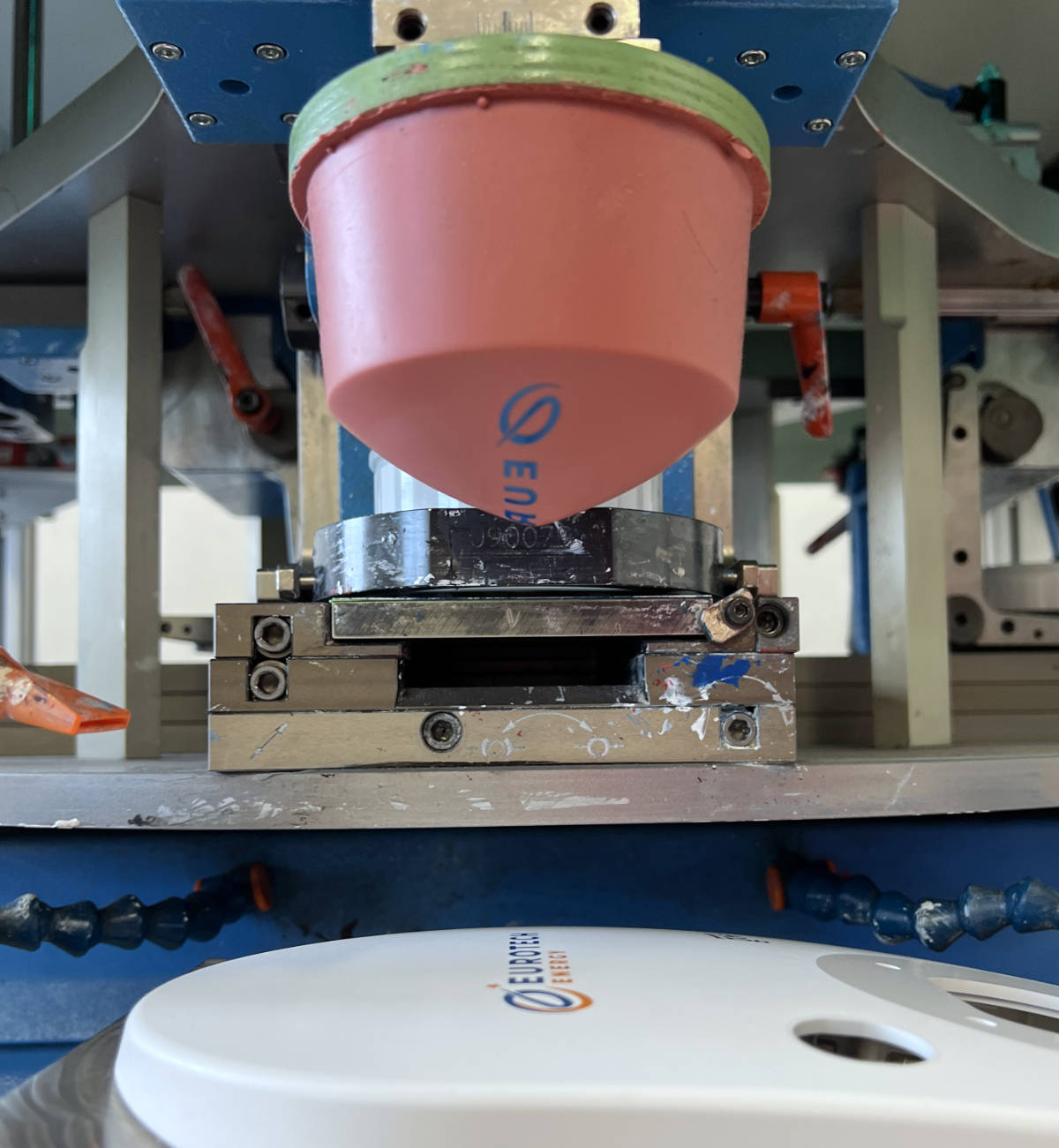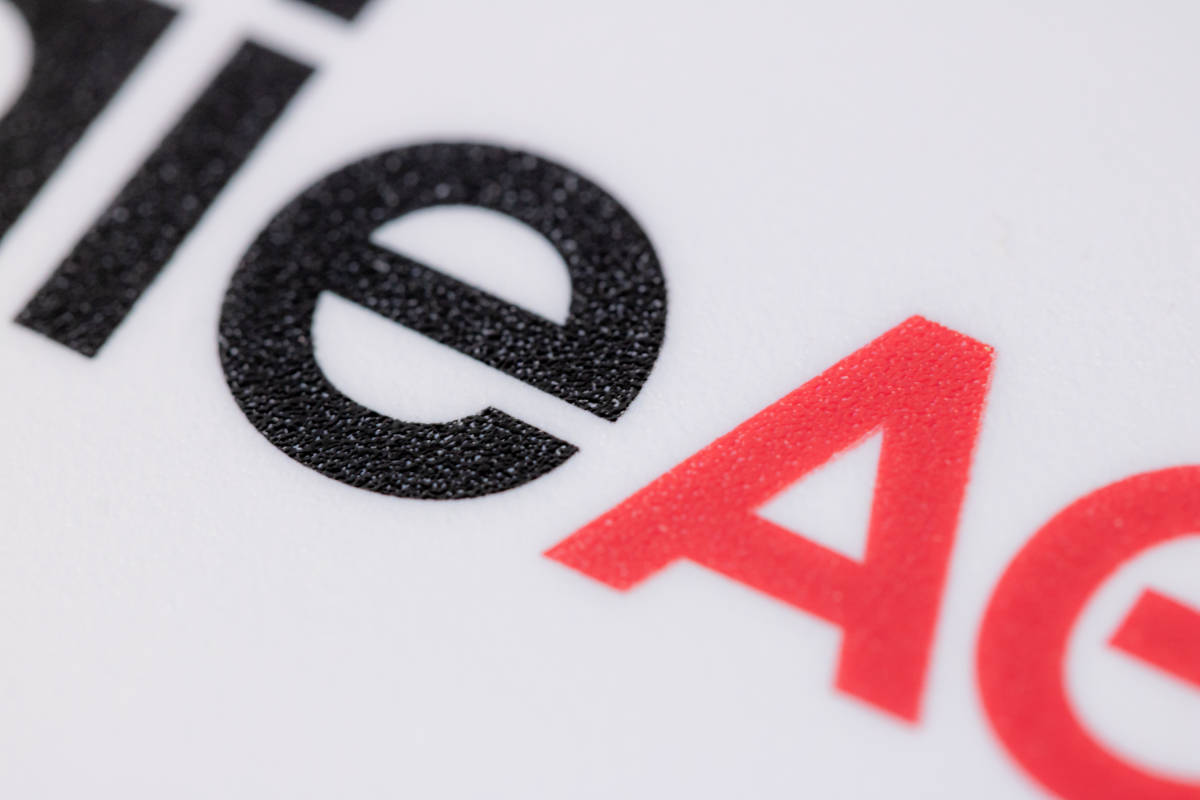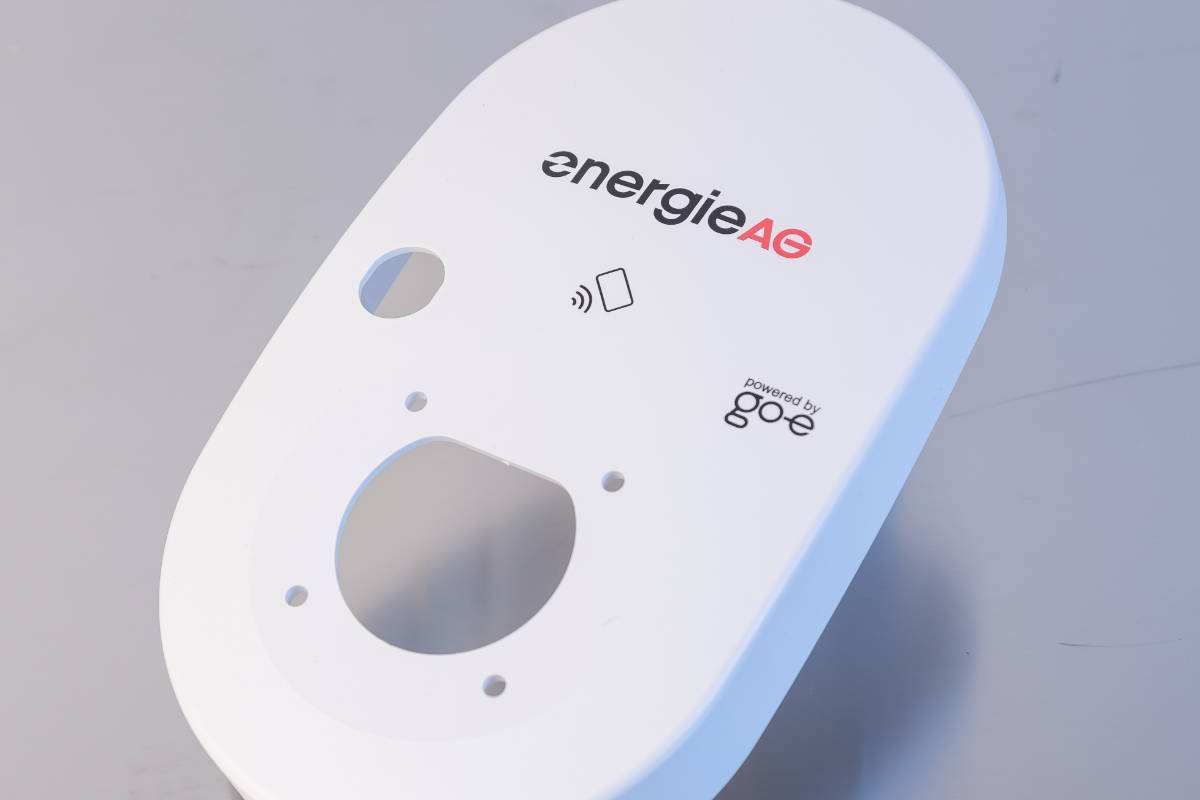Pad printing
Lettering, logos or images on uneven surfaces
What exactly is pad printing?
Pad printing is an indirect intaglio printing process which, unlike conventional screen printing, can also be used to print logos, lettering and images onto uneven surfaces. The areas of application for pad printing range from promotional gifts, such as printed USB sticks, lighters and ballpoint pens, to complex plastic, metal, glass or even wooden elements.
The advantages of pad printing lie in its flexibility, as the elastic pad optimally compensates for curves, corners and other uneven surfaces, as well as in its sustainability. After each printing process, the pad can be easily and usually automatically cleaned and reused for subsequent projects. In addition, the ink used dries very quickly thanks to the precise printing and optimal adjustment of the ink quantity.
With our modern pad printing machines, we are able to print your promotional gifts, large plastic injection moulded parts and complex structured plastic components with exactly the motifs and lettering you desire. Corresponding interfaces and PLC control options offer us the highest possible flexibility.


The pad printing process
Our pad printers consist of five essential elements:
the tampon itself, which is usually made of silicone rubber,
the paint tray, which holds the required paint,
the spatula, which performs this task,
the squeegee, which is responsible for removing excess ink
and the cliché, which transfers the actual motif onto the tampon.
The desired colour is first placed in the ink tray. A spatula takes a sufficient amount and transports it to the so-called cliché. This is made of either plastic or steel and can be understood as a negative of the desired motif or lettering. The recesses of the cliché are filled with the selected colour from the ink tray when the spatula is passed over it. The machine unit, which includes a squeegee in addition to the spatula, then moves back and scrapes off any excess ink with the squeegee.
The flexible pad then lowers onto the printing plate, picking up the ink and thus the actual motif. In the final step, the pad presses the ink onto the object to be printed, whereby edges, corners, curves, raised areas and rough surfaces are usually overcome or smoothed out without any problems. Thanks to the silicone oil contained in the pad, perfect ink and motif transfer is usually possible.
Open ink pans are still used primarily for large-scale printing. This variant is also better suited for continuous printing on round objects. For smaller prints, however, closed ink pots are the better choice. These are sealed with a complete squeegee ring and moved directly against the printing plate to apply the required amount of ink in the correct dosage.
You are unsure whether the pad printing process is suitable for your project or have special requests that you would like to discuss in advance?
Then contact us by phone at +43 (0) 34 63 30 29 0 or by email at






